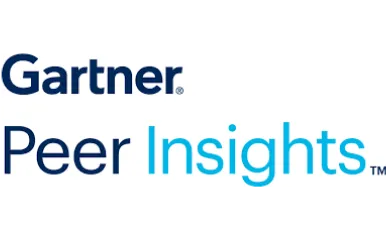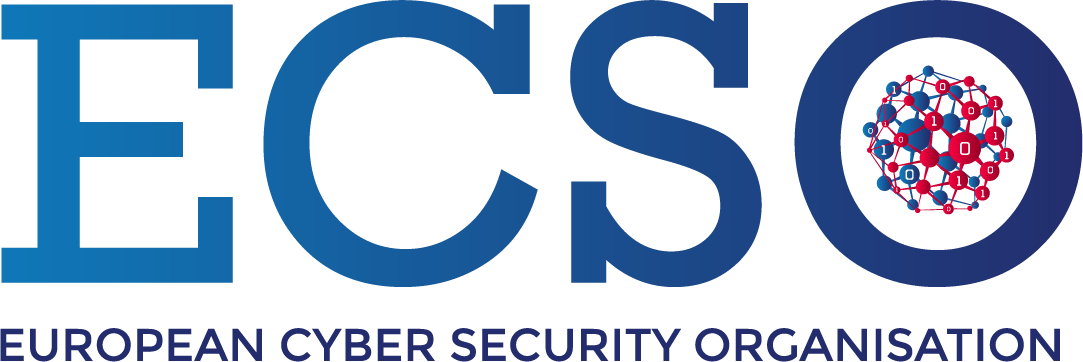Blog Post
Cyber Risk Quantification for Continuous Threat Exposure Management
March 31, 2025
TL;DR
- Continuous Threat Exposure Management (CTEM) solutions offer organizations real-time cyber risk visibility but often end up overwhelming security teams with excessive data.
- When integrated with cyber risk quantification (CRQ), however, which assigns likelihoods and financial impacts to risk, CTEM tools help security and risk managers (SRMs) prioritize mitigation efforts and better manage cyber risk.
- CRQ enhances key decision-making processes by illuminating which of an organization's vulnerabilities are most critical, allowing SRMs to more strategically invest resources.
- Additionally, CRQ bridges the long-standing gap that exists between security teams and key stakeholders, facilitating discussions and illuminating the value of cyber risk management.
- Common CRQ adoption challenges include data inconsistency, achieving executive buy-in, and integration complexity. Fortunately, these obstacles can easily be overcome by selecting an on-demand CRQ model.
- Industries such as finance, healthcare, and manufacturing have already begun incorporating CRQ into their CTEM tools to optimize security investments and strengthen overall cyber resilience.
From Visibility to Strategy: Strengthening CTEM With CRQ
Continuous Threat Exposure Management (CTEM) tools are extremely business-savvy investments, particularly for large-scale enterprises that have broad business networks and harness hundreds of cloud-based solutions, offering a detailed, real-time view of an organization's cyber exposure. Nevertheless, without a systematic means to assess and prioritize the hundreds of risks they face, security teams will typically find themselves overwhelmed, unable to determine which vulnerability should be mitigated first.
Cyber risk quantification (CRQ) provides this missing methodology, converting security risks into likelihoods of occurrence and potential financial ramifications, enabling SRMs to distinguish between high-impact threats and those that pose minimal risk. With these data-driven, objective insights, security leaders can then make the necessary decisions about their management efforts and prioritize resources in a way that aligns with business priorities.
In addition to the optimized risk assessment capabilities, the integration of CRQ into CTEM solutions likewise enhances communication between cybersecurity teams and high-level executives and creates a shared understanding of the value of cyber risk management investments. In fact, organizations that adopt this approach are increasingly finding that their teams can make cybersecurity decisions with greater confidence and efficiency. As cyber threats continue to become more frequent, the ability to quantify risks will become a defining factor in optimizing resources and maintaining resilience.
Understanding Cyber Risk Quantification (CRQ)
On-demand CRQ is the process of converting the cybersecurity risks an organization is exposed to into monetary and numerical values. For instance, as opposed to only knowing that a misconfiguration is 'likely' to be exploited and will lead to a 'high' level of damage, SRMs (with CRQ) would understand that for that particular misconfiguration, there is a 31% chance of exploitation in the upcoming year which will, on average, lead to $5 million worth of loss.
Having this perspective enables organizations to prioritize remediation efforts based on actual threat exposure rather than vague or subjective assessments. Then, it becomes possible to strategically allocate cybersecurity resources according to where they are needed the most rather than spreading efforts thinly across all 'likely' loss scenarios. Essentially, the tangible values help clarify which initiatives are in need of immediate attention and which can be set aside for later without compromising resiliency.
How CRQ Fuels Continuous Threat Exposure Management (CTEM)
CTEM solutions offer cybersecurity teams a clear window into the digital risks the organization faces at any given time and will update according to both the external risk landscape and internal changes. Despite this visibility, if security teams don't have a structured methodology for determining the criticality of these risks, they'll end up spending precious time and resources on issues that may not pose significant harm. CRQ brings a necessary layer of analysis to CTEM, directly solving this problem and ensuring that mitigation efforts are prioritized correctly.
Quantifying Exposure Severity
Not all threats are equal. Even those vulnerabilities that have a high likelihood of exploitation with severe consequences are distinct from one another in a myriad of ways. Cyber risk quantification allows SRMs to differentiate between these similarly assessed risks by evaluating both their probability of occurrence and the monetary implications. The concrete, comparable metrics help security teams hone their focus and mitigate the most threatening exposures first.
Bridging the Gap Between Security and Business Leaders
Ironically, one of the biggest challenges cybersecurity leaders have to tackle in the modern digital age is demonstrating the business impact of security risks to non-technical stakeholders. CTEM illuminates the organization's attack surface, but without CRQ, it's nearly impossible to justify, in tangible terms, why specific initiatives need to be prioritized over others. By transforming complex metrics into financial ones, however, quantification streamlines executive-level communication and unites security and business strategies.
Optimizing Resource Allocation
Organizations, no matter their size or revenue band, have limited security budgets and personnel, and it's up to SRMs to determine how to optimize those resources. The data-driven outcomes an on-demand CRQ assessment generates ensure that the most critical risks receive the attention and investment they demand. The objective values also allow SRMs to calculate the ROI of their prioritized mitigation initiatives, helping them to maximize cost-effectiveness without unnecessary overspending.
Overcoming Common Challenges With CRQ Adoption
Financial cyber risk quantification is plainly an advantageous tool to incorporate into any CTEM solution. The enormous benefits, however, do not negate the challenges that cybersecurity teams will sometimes face when implementing them. Depending on the chosen CRQ model or approach, SRMs may have to overcome certain obstacles.
Incomplete or Inconsistent Data
The accuracy of CRQ outputs depends on high-quality, objective data regarding both the organization's internal systems and its unique external environment. Unfortunately, some CRQ frameworks require SRMs to gather this data manually, during which inconsistencies due to human error and bias can arise, compromising the reliability of the results. Data silos across different departments can further exacerbate the issue, leaving teams with fragmented and trivial information that does not bolster decision-making.
Without a standardized, automated data collection process, organizations risk basing their cybersecurity strategies on skewed information, which not only reduces their overall effectiveness but, more ominously, can leave potentially high-impact vulnerabilities unidentified.
Executive Buy-In
Many key stakeholders, particularly those outside of cybersecurity roles or lacking cyber experience, struggle to initially grasp the value and practicality of CRQ assessments. Especially if they lack a clear understanding of how the quantified outputs can be translated into business outcomes, they most likely will hesitate to provide SRMs with the resources necessary to procure an on-demand CRQ solution.
To move past this resistance, security leaders should make sure to frame cyber risk quantification as a tool that will bridge the gap that too often exists between them and senior leadership, underscoring the ensuing metrics it provides, such as average annual loss, median down time in the wake of an event, and the potential number of data records compromised. The more familiar terms give stakeholders confidence that CRQ can help integrate cyber risk management within the broader ERM framework.
Complexity in Integration
Implementing CRQ into an enterprise's existing CTEM solution can be a strenuous task, requiring careful planning and investment. Still, having this direct integration is crucial, as it ensures CRQ insights are thoroughly considered when important decisions need to be made. Conversely, when CRQ operates as a standalone process that requires additional manual work to align with CTEM information, it's exceedingly difficult to create an adequate prioritization strategy.
Overcoming this particular challenge is relatively straightforward, as the primary solution is to invest in an on-demand CRQ model that's not only API-friendly but specifically designed to integrate with CTEM and other security platforms. Automatically embedding CRQ directly into this CTEM workflow maximizes the potential impact cyber initiatives will have without disrupting existing processes.
CRQ in Action: Real-World Applications
Industries that handle large volumes of sensitive data are more frequently targeted by cyber attackers, making the data load from their CTEM solutions all the more dense. The amount of cybersecurity information and alerts they're faced with on a daily basis, therefore, has led enterprises in these sectors to be early adopters of CRQ, allowing them to make data-driven decisions that align with business objectives.
- Financial Services: Investment management firms and other financial institutions face a relentless onslaught of cyber threats, with malicious actors knowing that, if successfully infiltrated, the payout would be huge. CRQ has allowed these businesses to assign a dollar value to these potential security incidents, helping SRMs justify spending decisions in terms all stakeholders understand.
- Healthcare: Hospitals and medical organizations handle vast amounts of valuable data, specifically protected health information (PHI), which similarly have made them highly attractive targets for cybercriminals. By leveraging CRQ, however, healthcare security teams are able to assess which of the vulnerabilities they face pose the highest risk - both financially and otherwise - and thereby allocate resources toward securing the most appropriate tools and controls.
- Manufacturing: Due to its reliance on industrial control systems (ICS) and interconnected supply chains, the manufacturing industry has likewise experienced a significant uptick in the frequency of attempted cyber incidents. Manufacturing organizations that have implemented CRQ, though, have been more effective in building a state of resilience against such attacks. The quantified insights have likewise supported supply chain risk management by determining the potential losses associated with third-party security gaps.
These early integrators of cyber risk quantification and CTEM solutions have gained a competitive advantage in the market, distinguishing themselves by their ability to optimize cybersecurity resources and safeguard their bottom lines in the event of a cyber attack.
The Future of Cybersecurity Lies in Quantification
As the frequency of attempted cyber attacks grows exponentially, relying solely on visibility tools like CTEM is no longer a viable strategy for effectively managing cyber exposure. Without a structured method to assess and prioritize the threats they face, security teams risk wasting precious time and limited resources on low-impact vulnerabilities that have no broader business implications. Fortunately, on-demand CRQ can bridge the disconnect between CTEM's raw data and optimized decision-making.
Indeed, by integrating CRQ models into CTEM solutions, organizations become equipped to allocate resources more strategically, leveraging objective, data-driven insights that lead to a state of resilience more efficiently. Moreover, having the ability to translate cyber risk into tangible financial terms ensures that stakeholders can align security investments with overall enterprise risk management goals. This ideal combination of tools enables teams to mitigate risk proactively and protect the business’s bottom line.
To learn more about integrating CRQ into your CTEM solution or to start getting quantified insights regarding your organization's cyber exposure, schedule a free demo with one of our experts today.





.webp)


.jpg)
